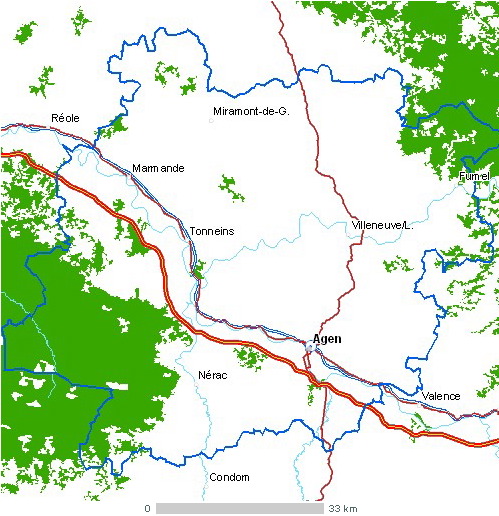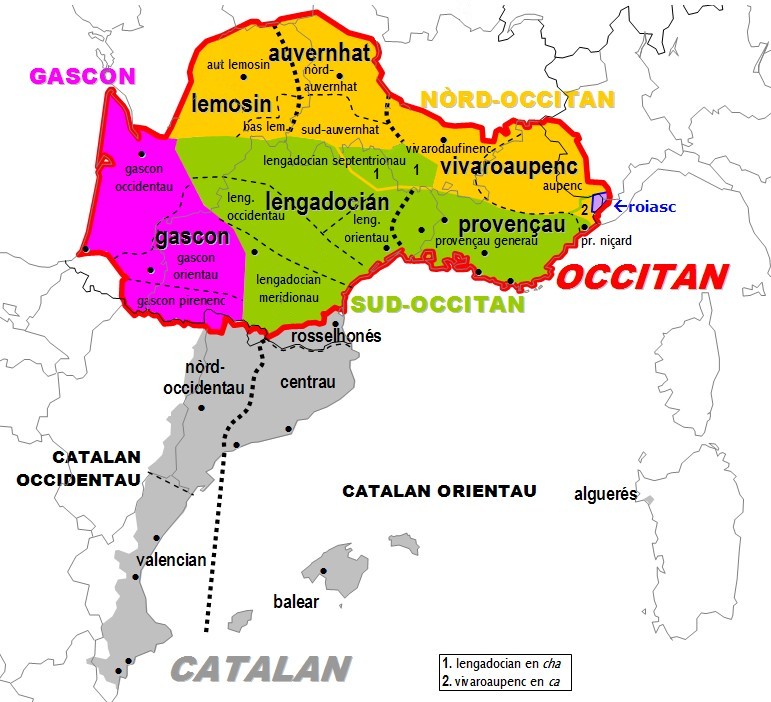|
Monflanquin
Monflanquin (; Languedocien: ''Montflanquin'') is a commune in the Lot-et-Garonne department in south-western France. Built in 1256 as a military bastide town on a strategic north-south route, it changed hands several times during the Hundred Years' War. The village is a member of the ''Les Plus Beaux Villages de France'' ("The most beautiful villages of France") association. Demography Notable people *Louis Couffignal (1902-1966), mathematician and cybernetics pioneer See also *Communes of the Lot-et-Garonne department The following is a list of the 319 communes of the French department of Lot-et-Garonne. The communes cooperate in the following intercommunalities (as of 2022): [...More Info...] [...Related Items...] OR: [Wikipedia] [Google] [Baidu] |
Lot-et-Garonne
Lot-et-Garonne (, oc, Òlt e Garona) is a department in the Nouvelle-Aquitaine region of Southwestern France. Named after the rivers Lot and Garonne, it had a population of 331,271 in 2019.Populations légales 2019: 47 Lot-et-Garonne INSEE Its and largest city is . History Lot-et-Garonne is one of the original 83 departments created on 4 March 1790, as a result of the[...More Info...] [...Related Items...] OR: [Wikipedia] [Google] [Baidu] |
Bastide
Bastides are fortified new towns built in medieval Languedoc, Gascony, Aquitaine, England and Wales during the thirteenth and fourteenth centuries, although some authorities count Mont-de-Marsan and Montauban, which was founded in 1144, as the first bastides.:fr:Bastide (ville), Bastide in the French Wikipedia, retrieved March 8, 2007. Some of the first bastides were built under Raymond VII of Toulouse to replace villages destroyed in the Albigensian Crusade. He encouraged the construction of others to colonize the wilderness, especially of southwest France. Almost 700 bastides were built between 1222 (Cordes-sur-Ciel, Tarn) and 1372 (La Bastide d'Anjou, Tarn). History were developed in number under the terms of the Treaty of Paris (1229), which permitted Raymond VII of Toulouse to build new towns in his shattered domains but not to fortify them. When the Capetian Alphonse of Poitiers inherited, under a marriage stipulated by the treaty, this " founder of unparalleled energy" con ... [...More Info...] [...Related Items...] OR: [Wikipedia] [Google] [Baidu] |
Les Plus Beaux Villages De France
''Les Plus Beaux Villages de France'' (meaning “the most beautiful villages of France”) is an independent association created in 1982 for the promotion of the tourist appeal of small rural villages with a rich cultural heritage. As of September 2016, it numbers 156 member villages (independent ''communes'' or part of a '' communauté de communes''). Membership requires meeting certain selection criteria and offers a strategy for development and promotion to tourists. The three initial selection criteria are the rural nature of the village (a population of less than 2,000 inhabitants), the presence of at least two national heritage sites ( ''sites classés'' or ''monuments historiques'') and local support in the form of a vote by the council. Each village must pay an annual fee to the association and the mayor must sign the association's Quality Charter. If the village fails to meet the requirements of the charter it may be excluded. The association claims membership can br ... [...More Info...] [...Related Items...] OR: [Wikipedia] [Google] [Baidu] |
Louis Couffignal
Louis Pierre Couffignal (16 March 1902 – 4 July 1966) was a French mathematician and cybernetics pioneer, born in Monflanquin. He taught in schools in the southwest of Brittany, then at the naval academy and, eventually, at the Buffon School. Biography After joining the school, Couffignal hesitated to write a thesis on Symbolic Logic but after his meetings with Philbert Maurice d'Ocagne, he decided to focus on machines and on Mechanical Logic. He published a variety of notes at the Academy of Sciences, with a focus on using binary computation by machines to solve new problems. Following Leibniz, he promoted binary numbers as the basis of calculating machines. Couffignal received his Doctorate of Sciences in 1938 with his thesis on Mechanical Analysis, demonstrating applications for machines to calculate celestial mechanics. Couffignal took on an interest in Cybernetics, influenced by his meetings with Louis Lapicque in 1941 and the cyberneticist Norbert Wiener in 1946. With L ... [...More Info...] [...Related Items...] OR: [Wikipedia] [Google] [Baidu] |
Communes Of The Lot-et-Garonne Department
The following is a list of the 319 communes of the French department of Lot-et-Garonne. The communes cooperate in the following intercommunalities (as of 2022):BANATIC Périmètre des EPCI à fiscalité propre. Accessed 15 March 2020. *CA * *CA |
Communes Of Lot-et-Garonne
The following is a list of the 319 communes of the French department of Lot-et-Garonne. The communes cooperate in the following intercommunalities (as of 2022):BANATIC Périmètre des EPCI à fiscalité propre. Accessed 15 March 2020. *CA * *CA |
Communes Of France
The () is a level of administrative divisions, administrative division in the France, French Republic. French are analogous to civil townships and incorporated municipality, municipalities in the United States and Canada, ' in Germany, ' in Italy, or ' in Spain. The United Kingdom's equivalent are civil parishes, although some areas, particularly urban areas, are unparished. are based on historical geographic communities or villages and are vested with significant powers to manage the populations and land of the geographic area covered. The are the fourth-level administrative divisions of France. vary widely in size and area, from large sprawling cities with millions of inhabitants like Paris, to small hamlet (place), hamlets with only a handful of inhabitants. typically are based on pre-existing villages and facilitate local governance. All have names, but not all named geographic areas or groups of people residing together are ( or ), the difference residing in the l ... [...More Info...] [...Related Items...] OR: [Wikipedia] [Google] [Baidu] |
Languedocien Dialect
Languedocien (French name, ), Languedocian or Lengadocian (), is an Occitan dialect spoken in rural parts of southern France such as Languedoc, Rouergue, Quercy, Agenais and Southern Périgord. It is sometimes also called Languedocien-Guyennais. Due to its central position among the dialects of Occitan, it is often used as a basis for a Standard Occitan. About 10% of the population of Languedoc are fluent in the language (about 300,000), and another 20% (600,000) "have some understanding" of the language. All speak French as their first or second language. Geographic distribution Languedocien is spoken in certain parts of three French regions. * Occitanie: Aveyron, Lot, Tarn, Tarn-et-Garonne except Lomagne, Ariège (except a western part), Haute-Garonne (except the districts of Saint-Gaudens and Muret), Aude, Hérault, Lozère, western and northern parts of Gard and Fenouillèdes. * Nouvelle-Aquitaine: south of the Dordogne, east of the Gironde, north-eastern two-thirds ... [...More Info...] [...Related Items...] OR: [Wikipedia] [Google] [Baidu] |
Departments Of France
In the administrative divisions of France, the department (french: département, ) is one of the three levels of government under the national level (" territorial collectivities"), between the administrative regions and the communes. Ninety-six departments are in metropolitan France, and five are overseas departments, which are also classified as overseas regions. Departments are further subdivided into 332 arrondissements, and these are divided into cantons. The last two levels of government have no autonomy; they are the basis of local organisation of police, fire departments and, sometimes, administration of elections. Each department is administered by an elected body called a departmental council ( ing. lur.. From 1800 to April 2015, these were called general councils ( ing. lur.. Each council has a president. Their main areas of responsibility include the management of a number of social and welfare allowances, of junior high school () buildings and technica ... [...More Info...] [...Related Items...] OR: [Wikipedia] [Google] [Baidu] |
France
France (), officially the French Republic ( ), is a country primarily located in Western Europe. It also comprises of overseas regions and territories in the Americas and the Atlantic, Pacific and Indian Oceans. Its metropolitan area extends from the Rhine to the Atlantic Ocean and from the Mediterranean Sea to the English Channel and the North Sea; overseas territories include French Guiana in South America, Saint Pierre and Miquelon in the North Atlantic, the French West Indies, and many islands in Oceania and the Indian Ocean. Due to its several coastal territories, France has the largest exclusive economic zone in the world. France borders Belgium, Luxembourg, Germany, Switzerland, Monaco, Italy, Andorra, and Spain in continental Europe, as well as the Netherlands, Suriname, and Brazil in the Americas via its overseas territories in French Guiana and Saint Martin. Its eighteen integral regions (five of which are overseas) span a combined area of and contain clos ... [...More Info...] [...Related Items...] OR: [Wikipedia] [Google] [Baidu] |
Hundred Years' War
The Hundred Years' War (; 1337–1453) was a series of armed conflicts between the kingdoms of England and France during the Late Middle Ages. It originated from disputed claims to the French throne between the English House of Plantagenet and the French royal House of Valois. Over time, the war grew into a broader power struggle involving factions from across Western Europe, fuelled by emerging nationalism on both sides. The Hundred Years' War was one of the most significant conflicts of the Middle Ages. For 116 years, interrupted by several truces, five generations of kings from two rival dynasties fought for the throne of the dominant kingdom in Western Europe. The war's effect on European history was lasting. Both sides produced innovations in military technology and tactics, including professional standing armies and artillery, that permanently changed warfare in Europe; chivalry, which had reached its height during the conflict, subsequently declined. Stronger ... [...More Info...] [...Related Items...] OR: [Wikipedia] [Google] [Baidu] |



